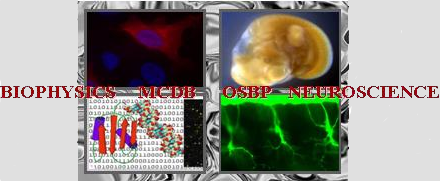Poster abstracts
Poster number 100 submitted by Blanche Chen
Native nucleosome-positioning elements for the investigation of nucleosome repositioning.
Ruo-Wen Chen (Ohio State Biochemistry Graduate Program, The Ohio State University, Columbus, OH 43210, USA), Shane D. Stoeber (Department of Biochemistry and Molecular Biology, The Pennsylvania State University, State College, United States ), Ilana M. Nodelman (TC Jenkins Department of Biophysics, Johns Hopkins University, Baltimore, MD 21218, USA), Gregory D. Bowman (TC Jenkins Department of Biophysics, Johns Hopkins University, Baltimore, MD 21218, USA), Lu Bai (Department of Biochemistry and Molecular Biology, The Pennsylvania State University, State College, United States ), Michael G. Poirier (Ohio State Biochemistry Graduate Program, The Ohio State University, Columbus, OH 43210, USA)
Abstract:
Nucleosome repositioning is crucial for generating nucleosome-depleted regions (NDRs) to initiate transcription. This process has been studied through structural, biochemical, and single-molecule approaches, which require recombinant nucleosomes with high homogeneity. This is often achieved by using the Widom 601 sequence, which is a nucleosome positioning element (NPE) selected for its extraordinary high affinity to the H3-H4 histone tetramer. Due to the artificial nature of 601, native NPEs are needed to explore how DNA sequence affects nucleosome repositioning. Here, we characterize the position distributions and nucleosome formation free energy for a set of yeast native nucleosomes (YNNs) from Saccharomyces cerevisiae. We show that these native NPEs can be used in biochemical studies of nucleosome repositioning by transcription factors (TFs) and the ATP-dependent chromatin remodeler Chd1. We further found that TFs could directly shift a certain fraction of nucleosomes containing native NPEs, but not 601-containing nucleosomes. In contrast, partial unwrapping was similar for 601 and native NPE sequences, and the rate of ATP-dependent remodeling by Chd1 was within the range of the fast and slow directions of the 601 nucleosomes. This set of native NPEs provides an alternative to the 601 NPE that can be used for probing the repositioning of nucleosomes that contain native DNA sequences.
References:
1. Kornberg,R.D. and Lorch,Y. (2020) Primary Role of the Nucleosome. Mol Cell, 79, 371–375.
2. Yan,C., Chen,H. and Bai,L. (2018) Systematic Study of Nucleosome-Displacing Factors in Budding Yeast. Molecular Cell, 71, 294-305.e4.
3. Lowary,P.T. and Widom,J. (1998) New DNA sequence rules for high affinity binding to histone octamer and sequence-directed nucleosome positioning. J Mol Biol, 276, 19–42.
4. Kaplan,N., Moore,I.K., Fondufe-Mittendorf,Y., Gossett,A.J., Tillo,D., Field,Y., LeProust,E.M., Hughes,T.R., Lieb,J.D., Widom,J., et al. (2009) The DNA-encoded nucleosome organization of a eukaryotic genome. Nature, 458, 362–366.
5. Lee,W., Tillo,D., Bray,N., Morse,R.H., Davis,R.W., Hughes,T.R. and Nislow,C. (2007) A high-resolution atlas of nucleosome occupancy in yeast. Nat Genet, 39, 1235–1244.
Keywords: nucleosome positioning, transcription factor, chromatin biology
